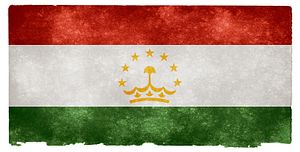In 2016, 830 Tajik nationals applied for asylum in Poland, according to Eurostat. In 2015, 527 Tajiks had sought asylum in Poland, a significant rise from the 105 who applied in 2014. Tajiks were the second-largest group seeking asylum in Poland, falling behind the more than 7,000 Russian citizens who did so, many of whom are Chechens.
Ultimately, in 2016, Poland accorded refugee status to just 4.2 percent of the 9,780 people seeking asylum (6 percent were granted “subsidiary protection” and 2 percent granted authorization to remain in Poland for “humanitarian reasons.”) Poland had one of the highest rejection rates, 87.7 percent.
Yan Matusevich, a migration researcher, wrote last summer for The Diplomat about the quiet Tajik refugee crisis. Matusevich noted that Poland had not seen a spike in asylum seekers from Syria or Afghanistan — as many other European countries did — but instead a surge of Tajiks.
Why Poland? As Matusevich wrote, Tajiks can travel without a visa through Russia to Belarus. From there, Poland is a logical entry point into the European Union (Latvia and Lithuania are also European Union members but received fewer than 500 asylum applicants each in 2016. Tajiks were not among the top five nationalities seeking asylum in either.) Dushanbe has made efforts — either via extradition requests or extraordinary renditions — to return troublesome Tajiks to the state to face various charges. Those feeling insecure in Russia, where the Tajik authorities may still reach them, look to Europe as a better bet.
The number of Tajik asylum applicants in Poland would have likely been higher in 2015 and 2016 had Polish border guards not turned thousands back. This was something Matusevich wrote about and was the subject of a report from Human Rights Watch released in March. “Polish authorities routinely deny asylum seekers at the Belarus-Poland border the right to apply for asylum and instead summarily return them to Belarus,” the report says.
Each individual has their own reasons for fleeing Tajikistan. The surge in asylum seekers correlates not just with increased economic pressure across the former Soviet Union but also with Dushanbe’s crackdown on opposition political groups — especially the Islamic Renaissance Party (IRPT) and Group 24 — which went into high gear in 2015. The inability, and perhaps unwillingness, to separate the two groups (economic migrants and those fleeing repression) makes the Polish border a difficult one to cross.
It’s also worth calling attention to what Anna Cieślewska, a Central Asia expert from the Jagiellonian University in Kraków, told Agnieszka Pikulicka-Wilczewska, writing for EurasiaNet, earlier this year:
…Cieślewska noted that in 2015 around 90 percent of the 500 or so applications for asylum submitted by citizens of Tajikistan in Poland were withdrawn, most likely because the applicants moved onward to other western European countries, where salaries are higher and Tajik communities are more vibrant. Given that Berlin hosts the headquarters of the IRPT, the majority of political dissidents aspire to move to Germany.
Matusevich, last August, noted that in the first half of 2016, 660 Tajiks had sought asylum in Poland. Judging from the complete 2016 data, the flow tapered off toward the end of the year. We shall see what 2017 holds, but with the IRPT firmly under the state’s fist — many of its leaders (and their lawyers) in jail — the numbers of Tajiks at the Polish border may decline. Even so, Tajiks who have been able to secure asylum in the European Union will use the relative safety to continue to criticize the state from which they fled.
































